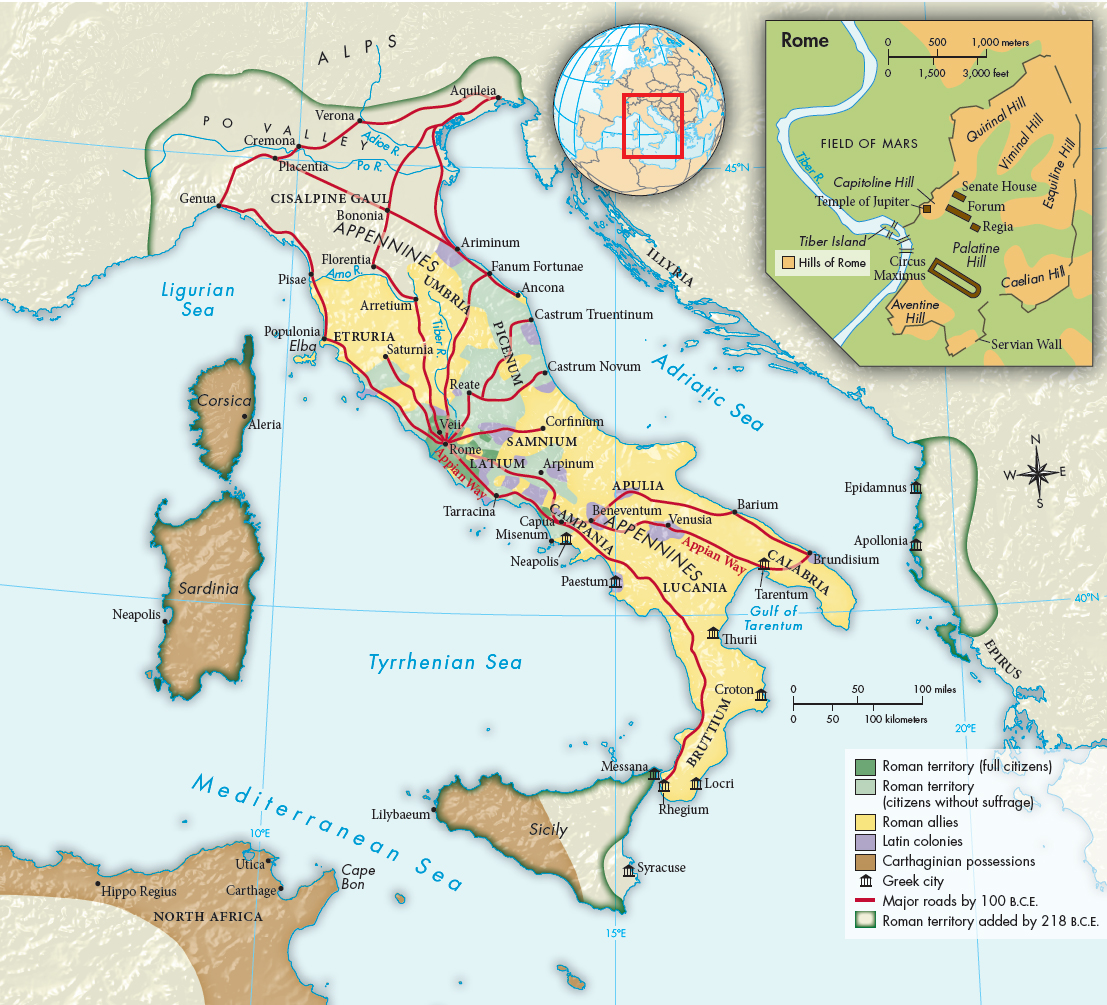The Geography of Italy
The Italian peninsula occupies the center of the Mediterranean basin and serves as a focal point for the two halves (Map 5.1). Italian winters are rainy, but the summer months are dry. Because of the climate, the rivers of Italy usually carry little water during the summer. Most of Italy’s other rivers are unsuitable for regular, large-

Geography encouraged Italy to look to the Mediterranean. In the north, Italy is protected by the Alps, which form a natural barrier. From the north the Apennine Mountains run southward for the entire length of the Italian boot, cutting off access to the Adriatic Sea for those to their west. This barrier induced Italy to look west to Spain and Carthage rather than east to Greece, but it did not carve up the land in a way that would prevent the development of political unity.
In their southward course, the Apennines leave two broad and fertile plains to their west: Latium and Campania. These plains attracted settlers and invaders from the time that peoples began to move into Italy. Among these peoples were those who would found Rome on the Tiber River in Latium.
This site enjoyed several advantages. The Tiber provided Rome with a constant source of water. Located at an easy crossing point on the Tiber, Rome thus stood astride the main avenue of communications between northern and southern Italy. Positioned amid seven hills, Rome was defensible and safe from the floods of the Tiber. It was also close to the sea through the port of Ostia. Thus, Rome was in an excellent position to develop the resources of Latium and maintain contact with the rest of Italy.